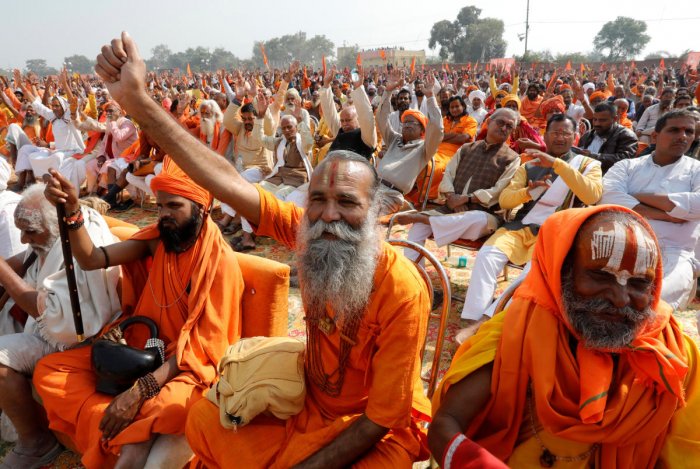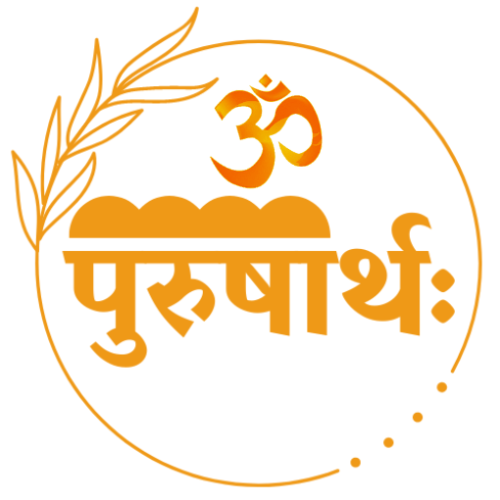Sanatan Hindu Dharma, often referred to as Hinduism, is a profound and ancient spiritual tradition that encompasses a wide range of philosophical, cultural, and religious practices. Within this diverse tapestry, various organizations and bodies have emerged to preserve and promote the principles and values of Sanatan Hindu Dharma. Two significant gatherings that serve this purpose are the Dharma Sabha and the Sanatana Hindu Dharma Acharya Sabha. These assemblies play a vital role in upholding the ideals, traditions, and unity of the Hindu community.

Dharma Sabha is a platform for Hindu community Dialogue and Guidance. Dharma Sabha refers to a gathering or assembly where individuals, Dharmik leaders, and their representatives come together to discuss matters related to dharma (righteousness), spirituality, and Hindu community affairs. It serves as a platform for dialogue, exchange of ideas, and decision-making within the Hindu community. Dharma Sabhas often comprise spiritual leaders, scholars, community elders, and representatives from different Hindu sects, organizations, and social groups.
The primary objectives of a Dharma Sabha include:
- Preservation of Hindu Traditions: Dharma Sabhas aim to uphold and preserve the ancient customs, rituals, and cultural practices of Sanatan Hindu Dharma. They serve as a space to discuss and reinforce the significance of festivals, ceremonies, and religious observances, ensuring their continuity and authenticity.
- Addressing Hindu’s Social and Community Issues: Dharma Sabhas play a crucial role in addressing social issues and concerns within the Hindu community. They discuss topics such as education, healthcare, women’s rights, environmental conservation, and social justice, seeking to find solutions that are in line with the principles of dharma.
- Spiritual Guidance and Mentorship: Dharma Sabhas provide spiritual guidance, teachings, and insights to individuals seeking a deeper understanding of Sanatan Hindu Dharma. Spiritual leaders and scholars share their wisdom, enabling individuals to navigate life’s challenges, make ethical choices, and progress on their spiritual paths.
Sanatana Hindu Dharma Acharya Sabha: Preserving Unity and Values The Sanatana Hindu Dharma Acharya Sabha is an organization comprising prominent Hindu religious leaders, gurus, and spiritual heads. It serves as a unifying body, bringing together various sects, lineages, and sampradayas (traditions) within Sanatana Hindu Dharma. The Acharya Sabha strives to foster unity, collaboration, and collective decision-making on matters of spiritual, cultural, and social significance.
The key objectives of the Sanatana Hindu Dharma Acharya Sabha are:
- Safeguarding Dharma and Tradition: The Acharya Sabha is committed to preserving the authenticity, integrity, and purity of Sanatana Hindu Dharma. It endeavors to protect the core teachings, philosophical tenets, and spiritual practices that define Hinduism, while adapting to the changing needs of society.
- Interfaith and Social Engagement: The Acharya Sabha promotes interfaith dialogue, understanding, and cooperation to foster harmony among diverse religious communities. It actively engages in social welfare initiatives, humanitarian work, and advocacy for the rights and well-being of marginalized sections of society.
- Scholarly Discourse and Research: The Acharya Sabha encourages scholarly research, scriptural study, and the dissemination of knowledge related to Sanatana Hindu Dharma. It facilitates discussions, seminars, and conferences that deepen the understanding of Hindu philosophy, theology, and culture.
Dharma Sabha and the Sanatana Hindu Dharma Acharya Sabha stand as significant gatherings within the Hindu community, dedicated to preserving, promoting, and guiding the principles and values of Sanatana Hindu Dharma.
Sanatan Dharma Sabha Program Sequence:
- Welcome Address:
- Introduction to the event and its purpose.
- Acknowledgment of the participants, guests, and attendees.
- Setting the tone for the Dharma Sabha, emphasizing the importance of the Sanatan Vedic Purushartha System.
- Lighting of the Lamp:
- A traditional ceremony to invoke divine blessings and light, symbolizing knowledge and wisdom.
- Brief explanation of the significance of the ritual in the context of the Dharma Sabha.
- Inaugural Speech:
- Keynote address by a respected spiritual leader or scholar on the relevance and significance of the Sanatan Vedic Purushartha System in modern times.
- Insights into the four Purusharthas (Dharma, Artha, Kama, and Moksha) and their practical application in daily life.
- Issues Based Discussion:
- A moderated discussion featuring experts and scholars well-versed in Sanatan Vedic philosophy and Purushartha System.
- In-depth exploration of each Purushartha, its components, and the interplay between them.
- Q&A session to allow the audience to interact with the panelists and seek clarification on specific aspects.
- Cultural Performances:
- Cultural performances showcasing traditional music, dance, and poetry related to Sanatan Vedic heritage.
- Presentation of devotional songs and chants that reflect the essence of the Purushartha System.
- Performances that depict the values, teachings, and stories from the scriptures.
- Workshops and Interactive Sessions:
- Concurrent workshops and interactive sessions on different aspects of the Purushartha System.
- Practical guidance on incorporating the principles of Dharma, Artha, Kama, and Moksha in everyday life.
- Facilitated discussions to explore real-life challenges and solutions based on the Purushartha System.
- Spiritual Discourses:
- Discourses by renowned spiritual masters and gurus, highlighting the path to Moksha and spiritual liberation.
- Insights into the various spiritual practices, meditation techniques, and yogic principles that aid in self-realization.
- Practical guidance on cultivating virtues, discipline, and mindfulness on the spiritual journey.
- Resolution:
- Summary of the key takeaways from the Dharma Sabha, emphasizing the importance of the Purushartha System as a guiding framework.
- Gratitude towards the participants, organizers, and attendees for their contributions to the event’s success.
- Encouragement to continue exploring and implementing the teachings of Sanatan Vedic philosophy in their lives.
- Closing Ceremony:
- Final remarks and blessings by the spiritual leaders or scholars.
- Prayer or meditation session for collective well-being and spiritual harmony.
- Vote of thanks to express gratitude to everyone involved in organizing the Dharma Sabha.
- Networking and Socializing:
- An opportunity for participants to connect, exchange ideas, and engage in informal discussions.
- Arrangement of refreshments or a shared meal to foster a sense of community and camaraderie.
Through these assemblies, spiritual leaders, scholars, and community representatives collaborate to address social issues, maintain cultural heritage, provide spiritual guidance, and foster unity. Together, they play a crucial role in sustaining the diverse tapestry of Sanatan Hindu Dharma and ensuring its relevance and continuity in the modern world.

